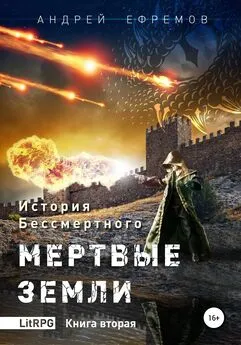Андрей Журавлёв - Сотворение Земли. Как живые организмы создали наш мир
- Название:Сотворение Земли. Как живые организмы создали наш мир
- Автор:
- Жанр:
- Издательство:Альпина нон-фикшн
- Год:2018
- Город:Москва
- ISBN:978-5-9614-5294-5
- Рейтинг:
- Избранное:Добавить в избранное
-
Отзывы:
-
Ваша оценка:
Андрей Журавлёв - Сотворение Земли. Как живые организмы создали наш мир краткое содержание
О том, как формировалась наша планета — такая, какой мы ее знаем, — книга Андрея Журавлева, палеонтолога, доктора биологических наук, профессора кафедры биологической эволюции биологического факультета МГУ.
Сотворение Земли. Как живые организмы создали наш мир - читать онлайн бесплатно ознакомительный отрывок
Интервал:
Закладка:
Stevens C. E., Hume I. D. 1998. Contributions of microbes in vertebrate gastrointestinal tract to production and conservation of nutrients // Physiological Reviews , 78, 393–427.
Taylor T. N., Taylor E. L., Krings M. 2009. Paleobotany: The Biology and Evolution of Fossil Plants. 2nd ed. New York: Academic Press, 1230 p.
Taylor T. N., Krings M., Taylor E. L. 2015. Fossil Fungi. New York: Academic Press, 382 p.
Trotter J. A., Williams I. S., Barnes C. R., Lécuyer C., Nicoll R. S. 2008. Did cooling oceans trigger Ordovician biodiversification? Evidence from conodont thermometry // Science, 321, 550–4.
Ward P., Labandeira C., Laurin M., Berner R. A. 2006. Confirmation of Romer’s Gap as a low oxygen interval constraining the timing of initial arthropod and vertebrate terrestrialization // Proceedings of the National Academy of Sciences of the USA, 103, 16818–22.
Wang J., Pfefferkorn H. W., Zhang Y., Feng Z. 2012. Permian vegetational Pompeii from Inner Mongolia and its implications for landscape paleoecology and paleobiogeography of Cathaysia // Proceedings of the National Academy of Sciences of the USA, 109, 4927–32.
Weng J.-K., Chapple C. 2010. The origin and the evolution of lignin biosynthesis // New Phytologist , 187, 273–85.
Wilson H. M., Anderson L. I. 2004. Morphology and taxonomy of Paleozoic millipedes (Diplopoda: Chilognatha: Archipolypoda) from Scotland // Journal of Paleontology , 78, 169–84.
Wilson J. P., Knoll A. H. 2010. A physiological explicit morphospace for tracheid-based water transport in modern and extinct seed plants // Paleobiology , 36, 335–55.
Wilson J. P. et al. 2017. Dynamic Carboniferous tropical forests: new views of plant function and potential for physiological forcing of climate // New Phytologist. DOI: 10.1111/nph.14700
Zambell C. B., Adams J. M., Gorring M. L., Schwartzman D. W. 2012. Effect of lichen colonization on chemical weathering of hornblende granite as estimated by aqueous flux // Chemical Geology , 291, 166–74.
Длусский Г. М. Муравьи (Hymenoptera: Formicidae) из бирманского янтаря // Палеонтологический журнал. 1996. № 3. 83–9.
Жерихин В. В. Избранные труды по палеоэкологии и филоценогенетике. — М.: Т-во научных изданий КМК, 2003.
Пономаренко А. Г. Палеобиология ангиоспермизации // Палеонтологический журнал. 1998. № 4. С. 3–10.
Расницын А. П. Избранные труды по эволюционной биологии. — М.: Т-во научных изданий КМК, 2005.
Ронов А. Б. Стратисфера, или Осадочная оболочка Земли (количественное исследование). — М.: Наука, 1993.
Симпсон Дж. Великолепная изоляция. История млекопитающих Южной Америки. — М.: Мир, 1983.
Татаринов Л. П. Морфологическая эволюция териодонтов и общие вопросы филогенетики. — М.: Наука, 1976.
Ahrens D., Schwarzer J., Vogler A. P. 2014. The evolution of scarab beetles tracks the sequential rise of angiosperms and mammals // Proceedings of the Royal Society of London B, 281 (1791), 20141470. DOI: 10.1098/rspb.2014.1470
Allen V., Bates K. T., Li Z., Hutchinson J. R. 2013. Linking the evolution of body shape and locomotor biomechanics in bird-line archosaurs // Nature , 497, 104–7.
Allmon W. D., Martin R. E. 2014. Seafood through time revisited: the Phanerozoic increase in marine trophic resources and its macroevolutionary consequences // Paleobiology , 40, 256–87.
Amick D. S. 2017. Evolving views on the Pleistocene colonization of North America // Quaternary International , 431 (Pt B), 125–51.
Bader W. et al. 2017. The recent increase of atmospheric methane from 10 years of ground-based NDACC FTIR observations since 2005 // Atmospheric Chemistry and Physics , 17, 2255–77.
Bains S., Norris R. D., Corfield R. M., Faul K. L. 2000. Termination of global warmth at the Palaeocene/Eocene boundary through productivity feedback // Nature , 407, 171–4.
Bambach R. K., Knoll A. N., Sepkoski J. J., Jr. 2002. Anatomical and ecological constraints on Phanerozoic animal diversity in the marine realm // Proceedings of the National Academy of Sciences of the USA, 99, 6854–9.
Bannikov A. F. 2014. The systematic composition of the Eocene actinopterygian fish fauna from Monte Bolca, northern Italy, as known to date // Studi e Ricerche sui Giacimenti Terziari di Bolca , 12, 23–34.
Bargo M. S., De Iuliis G., Vizcaíno S. F. 2006. Hypsodonty in Pleistocene ground sloths // Acta Palaeontologica Polonica , 51, 53–61.
Barnosky A. D. et al. 2016. Variable impact of late-Quaternary megafaunal extinction in causing ecological state shifts in North and South America // Proceedings of the National Academy of Sciences of the USA , 113, 856–61.
Bates K. T., Falkingham P. L. 2012. Estimating maximum bite performance in Tyrannosaurus rex using multi-body dynamics // Biology Letters, 8, 660–4.
Beerling D. J., Osborne C. P. 2006. The origins of the savanna biome // Global Change Biology , 12, 2023–31.
Beerling D. J., Royer D. L. 2011. Convergent Cenozoic CO 2history // Nature Geoscience , 4, 418–20.
Behrensmeyer A. K. et al., eds. 1992. Terrestrial Ecosystems Through Time: Evolutionary Paleoecology of Terrestrial Plants and Animals. Chicago: Univ. Chicago Press, 588 p.
Bellwood D. R., Goatley C. H. R., Bellwood O. 2017. The evolution of fishes and corals on reefs: form, function and interdependence // Biological Reviews , 92, 878–901.
Berendse F., Scheffer M. 2009. The angiosperm radiation revisited, an ecological explanation for Darwin’s ‘abominable mystery’ // Ecology Letters , 12, 865–72.
Beuck L., Wisshak M., Munnecke A., Freiwald A. 2008. A giant boring in Silurian stromatoporoid analysed by computer tomography // Acta Palaeontologica Polonica , 53, 149–60.
Bininda-Emonds O. R. P. et al. 2007. The delayed rise of present-day mammals // Nature, 446, 507–12.
Black B., Archer M., Hand S. J., Gothelp H. 2012. The rise of Australian marsupials: A synopsis of biostratigraphic, phylogenetic and palaeobiogeographic understanding // Talent J. A., ed. Earth and Life. Global Biodiversity, Extinction Intervals and Biogeographic Perturbations Through Time. Dordrecht: Springer, p. 983–1078.
Bocherens H. et al. 2011. Isotopic evidence for dietary ecology of cave lion ( Panthera spelaea ) in North-Western Europe: Prey choice, competition and implications for extinction // Quaternary International , 245, 249–61.
Botha-Brink J. 2017. Burrowing in Lystrosaurus : Preadaptation to a postextinction environment? // Journal of Vertebrate Paleontology. DOI: 10.1080/02724634.201.1365080
Bouchenak-Khelladi Y. et al. 2009. The origins and diversification of C 4grasses and savanna-adapted ungulates // Global Change Biology , 15, 2397–417.
Boyce C. K., Lee J. E. 2010. An exceptional role for flowering plant physiology in the expansion of tropical rainforests and biodiversity // Proceedings of the Royal Society of London B, 277, 3437–43.
Brandt D. S., Elias R. J. 1989. Temporal variations in tempestite thickness may be a geologic record of atmospheric CO 2// Geology , 17, 951–2.
Brodribb T. J., Field T. S. 2010. Leaf hydraulic evolution led a surge in leaf photosynthetic capacity during early angiosperm diversification // Ecology Letters , 13, 175–83.
Brown C. M. et al. 2017. An exceptionally preserved three-dimensional armored dinosaur reveals insight into coloration and Cretaceous predator-prey dynamics // Current Biology , 27, 1–8. DOI: 10.1016/j.cub.2017.06.071
Burgess S. D., Bowring S. A. 2015. High-precision geochronology confirms voluminous magmatism before, during, and after Earth’s most severe extinction // Science Advances , 1, e1500470. DOI: 10.1126/sciadv.1500470
Burness G. P., Diamond J., Flannery T. 2001. Dinosaurs, dragons, and dwarfs: The evolution of maximal body size // Proceedings of the National Academy of Sciences of the USA, 98, 14518–23.
Carter L. B., Dasgupta R. 2013. Hydrous basalt-limestone interaction at crustal conditions: Implications for generation of ultracalcic melts and outflux of CO 2at volcanic arcs // Earth and Planetary Science Letters , 427, 202–14.
Chernova O. F., Kirillova I. V., Boeskorov G. G., Shidlovskiy F. K., Kabilov M. R. 2015. Architectonics of the hairs of the woolly mammoth and woolly rhino // Proceedings of the Zoological Institute RAS , 319, 441–60.
Chu D. et al. 2015. Early Triassic wrinkle structures on land: stressed environments and oases for life // Scientific Reports , 5, 10109. DOI: 10.1038/srep10109
Clapham M. E., Payne J. L. 2011. Acidification, anoxia, and extinction: A multiple logistic regression analysis of extinction selectivity during the Middle and Late Permian // Geology , 39, 1059–62.
Clarkson M. O. et al. 2015. Ocean acidification and the Permian-Triassic mass extinction // Science , 348, 229–32.
Clarkson M. O. et al. 2016. Dynamic anoxic ferruginous conditions during the end-Permian mass extinction and recovery // Nature Communications , 7, 12236. DOI: 10.1038/ncomms.12236
Codron D., Carbone C., Müller D. W. H., Clauss M. 2012. Ontogenetic niche shifts in dinosaurs influenced size, diversity and extinction in terrestrial vertebrates // Biology Letters , 8, 620–3.
Cui Y., Kump L. R. 2015. Global warming and the end-Permian extinction event: Proxy and modelling perspectives // Earth-Science Reviews, 149, 5–22.
Danise S., Higgs N. D. 2015. Bone-eating Osedax worms lived on Mesozoic marine reptile deadfalls // Biology Letters, 11 (4), 20150072. DOI: 10.1098/rsbl.2015.0072
de Boer H. J., Eppinga M. B., Wassen M. J., Dekker S. C. 2012. A critical transition in leaf evolution facilitated the Cretaceous angiosperm revolution // Nature Communications , 3, 1221. DOI: 10.1038/ncomms2217
Dlussky G. M., Wappler T., Wedmann S. 2009. Fossil ants of the genus Gesomyrmex Mayr (Hymenoptera, Formicidae) from the Eocene of Europe and remarks on the evolution of arboreal communities // Zootaxa , 2031, 1–20.
Doughty C. E. et al. 2016. Global nutrient transport in a world of giants // Proceedings of the National Academy of Sciences of the USA, 113, 868–73.
Doyle J. A. 2012. Molecular and fossil evidence on the origin of angiosperms // Annual Review of Earth and Planetary Sciences , 40, 301–26.
Читать дальшеИнтервал:
Закладка:
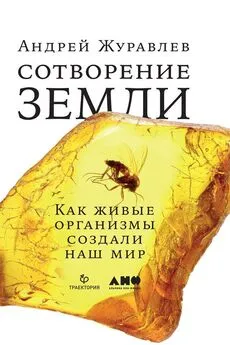

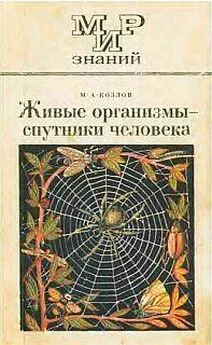
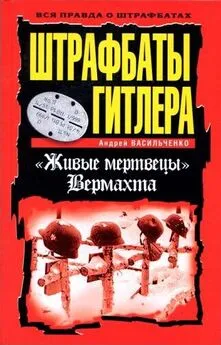
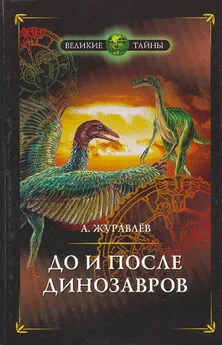
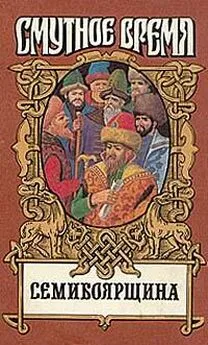
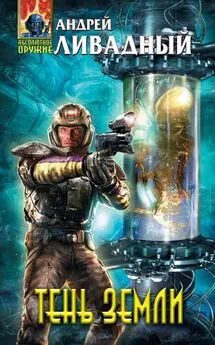
![Андрей Максимов - Самоубийство Земли [Повести и рассказы]](/books/1059571/andrej-maksimov-samoubijstvo-zemli-povesti-i-rass.webp)
